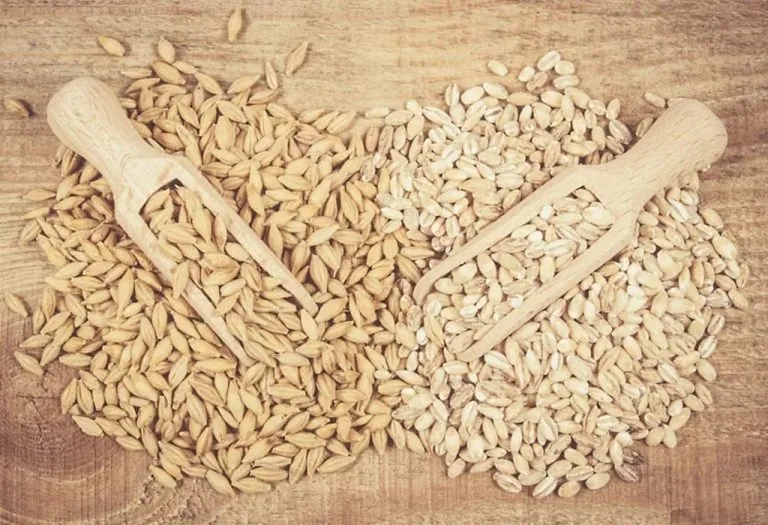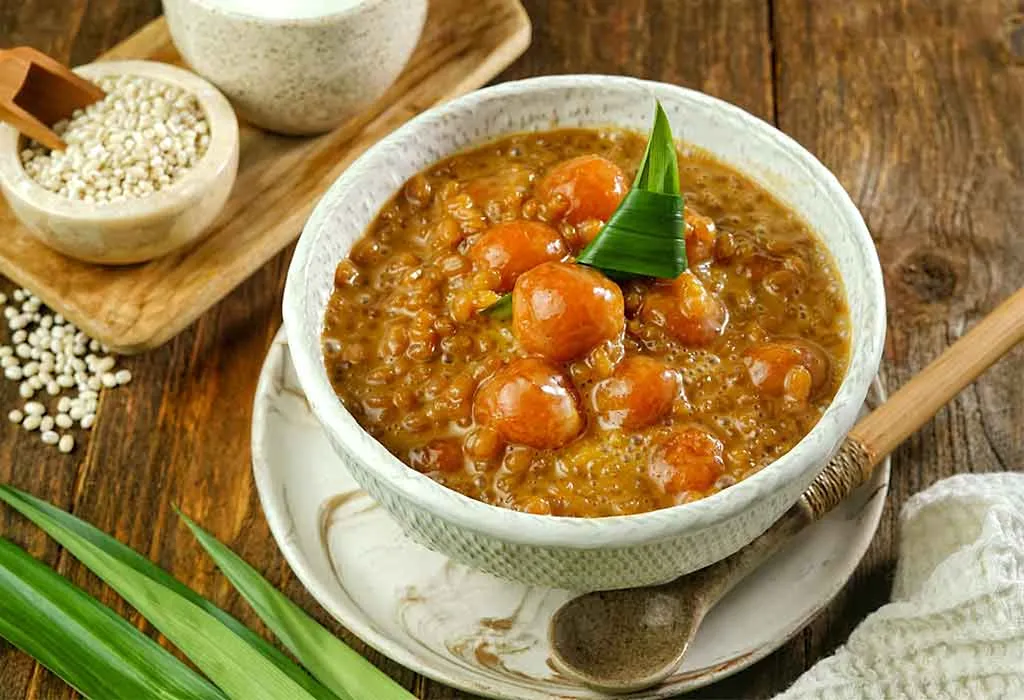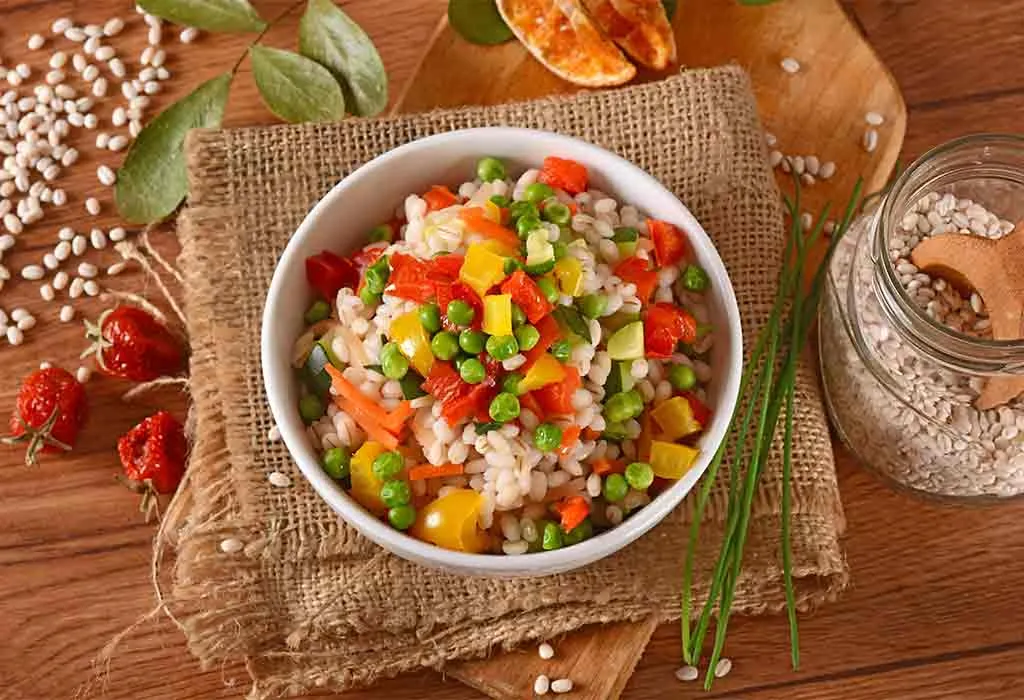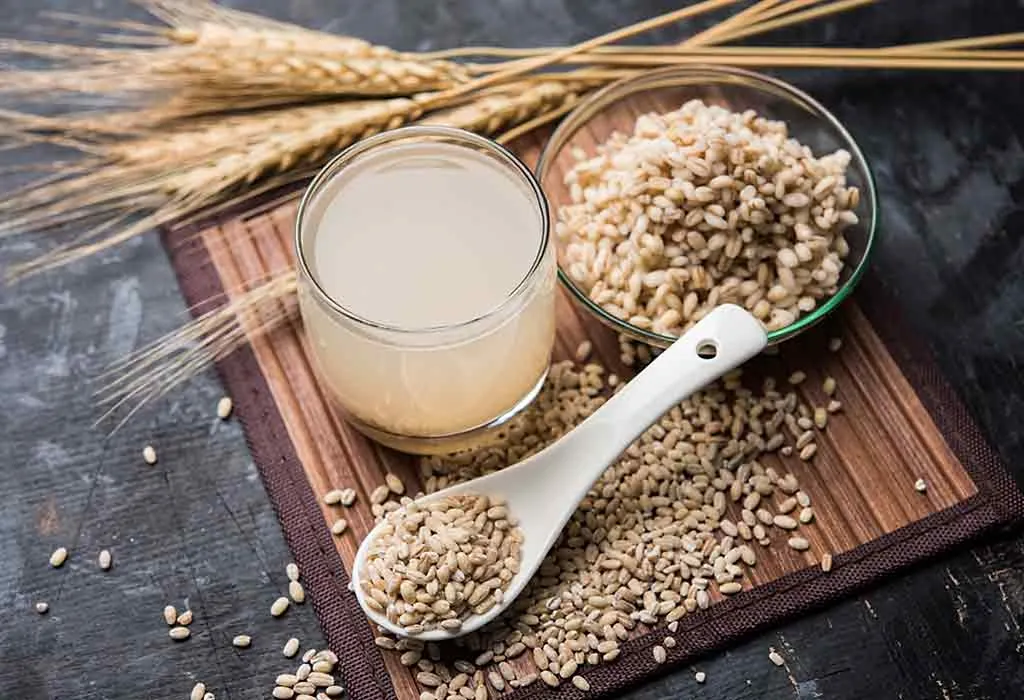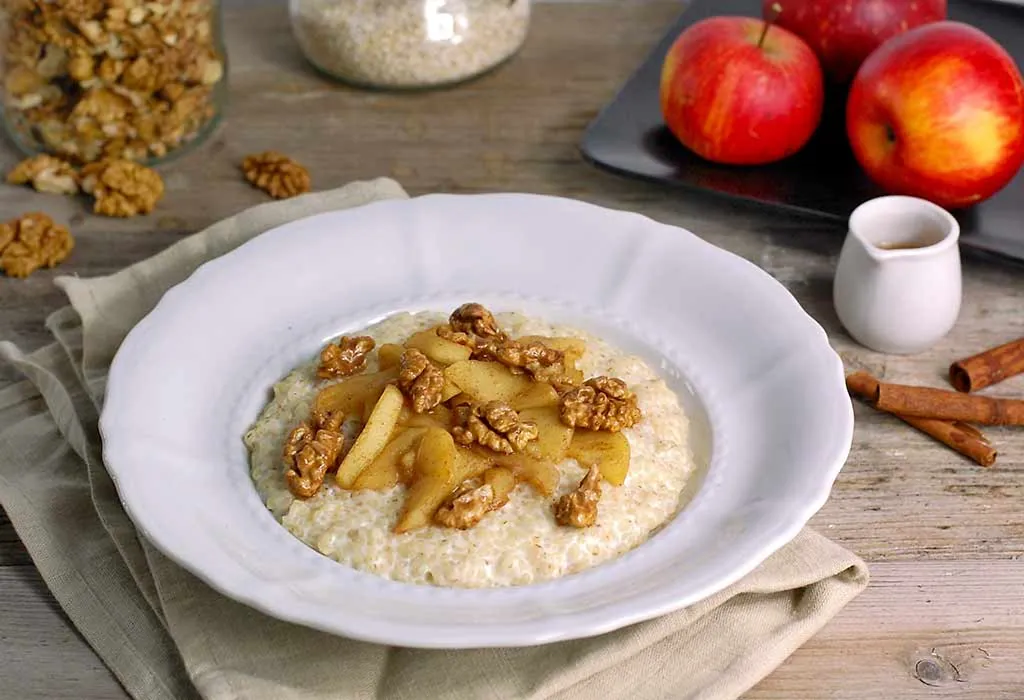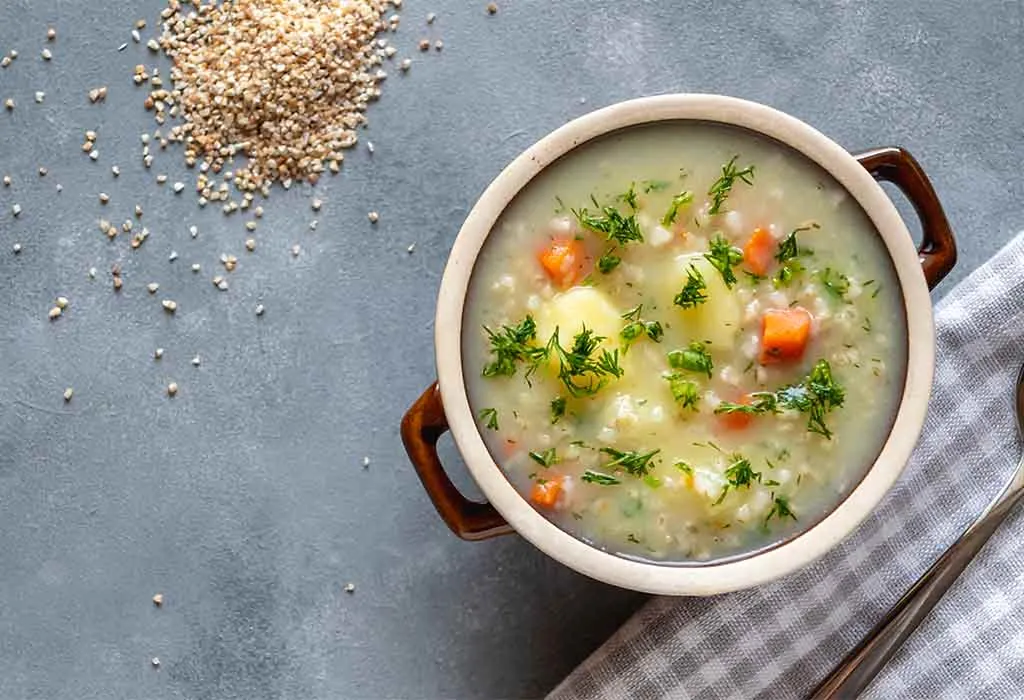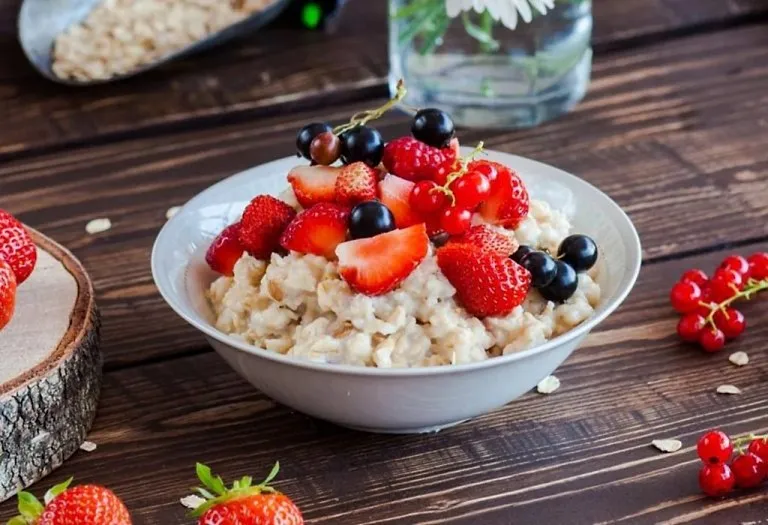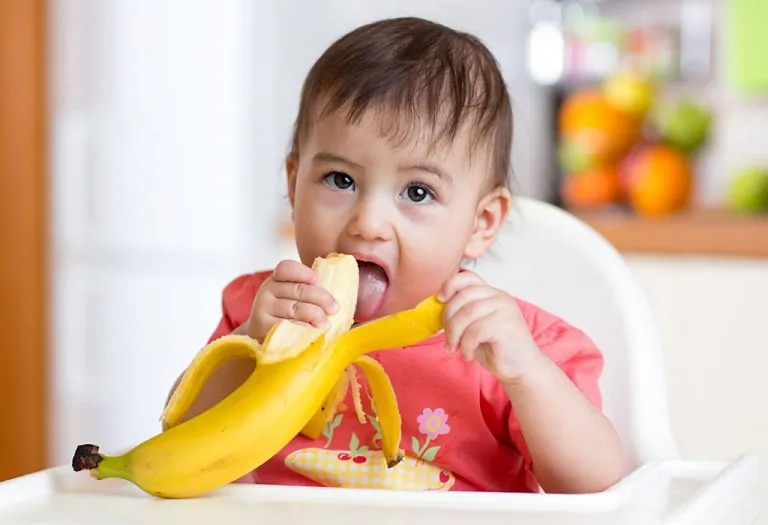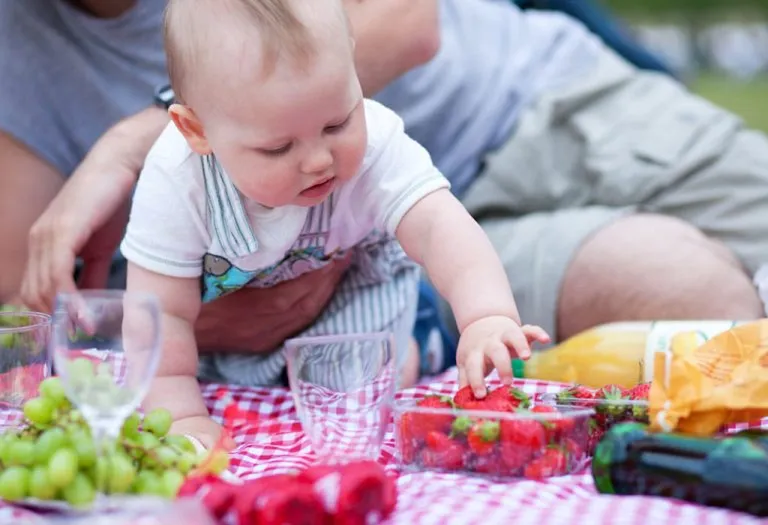Barley for Babies: How to Choose, Benefits, Recipes & More

Barley, renowned for its versatility and rich history spanning centuries, is a cereal crop cultivated across the globe in regions including Russia, France, Germany, the United States, the United Kingdom, Canada, and Australia. With its myriad varieties and adaptability to diverse climates, barley holds a prominent place in agricultural landscapes worldwide. From ancient civilizations to modern-day societies, its significance in human diets persists, offering a wealth of nutritional benefits. Notably, the inclusion of barley in infant nutrition underscores its role in early development and well-being. Barley for babies represents a tradition of nourishment passed down through generations, highlighting its enduring importance in fostering health and vitality from the earliest stages of life.
Nutritional Value of Barley
A rich source of Vitamin A, folate, and protein, barley makes for great baby food. The following nutrients can be obtained from barley:
| Nutrition Component | Value per 100 g | Nutrition Component | Value per 100 g |
| Water | 9.44 g | Energy | 354 kcal |
| Protein | 12.5 g | Total lipids | 2.3 g |
| Carbohydrate | 73.5 g | Calcium | 33 mg |
| Iron | 3.6 g | Magnesium | 133 mg |
| Phosphorus | 264 mg | Potassium | 453 mg |
| Zinc | 2.77 mg | Copper | 0.49 mg |
| Thiamin | 0.646 mg | Riboflavin | 0.285 mg |
| Niacin | 4.6 mg | Vitamin B6 | 0.318 mg |
| Folate | 19 ug | Vitamin A | 22 IU |
| Vitamin E | 0.57 mg | Vitamin K | 2.2 mg |
Is It Safe to Give Barley to Your Baby?
Barley is considered to be a good food for babies, as it is filling, and has plenty of nutritive properties. However, owing to the presence of gluten (a kind of protein), it is not advisable to make barley the first food for your baby. This is because there has been evidence to suggest that it can compromise the baby’s immune system, as it increases the risk of celiac disease (an autoimmune disease triggered by gluten). It is also not recommended for babies who are allergic to wheat, as there is a chance of a link between wheat allergy and barley allergy.
When Can Your Baby Start Eating Barley?
It is recommended that babies be started on a barley-based diet only after they are at least seven or eight months old. Follow the three-day rule as you do with all new foods. This means waiting for three days after introducing a new food to assess if your baby displays any signs of allergy, and not introducing any other new foods in those three days (1).
Barley is a versatile food item, and you can make it smooth or chunky according to your child’s preferences. However, it is best to start off with a little quantity of smooth barley cereal.
Benefits of Barley for Babies
Babies have small stomachs and can eat only small amounts of food at a time. Thus, it is essential that you make every meal of your baby a nutritional one! Barley is a superfood that can pack a nutritious punch at meal times. This is one reason why barley water for babies has been a time-tested favourite.
Here are a few important benefits of barley for babies:
1. Improves Digestion
A rich source of dietary fibre, barley can help stimulate digestion and regulate your child’s bowel movements. A healthy gut means a healthy baby!
2. Strengthens Bones
The presence of a good amount of phosphorous in barley can help strengthen your baby’s bones. After calcium, phosphorous is what our bones are made of.
3. Boosts Iron Absorption
Barley contains a significant amount of copper, which promotes the absorption of iron in the blood. There is no point in feeding your baby iron-rich food if it is not being absorbed properly.
4. Strengthens the Liver
Studies indicate that including barley in the diet on a regular basis has been useful in safeguarding the liver from damage, by reducing the excess production of bile acids.
5. Has Anti-fungal Properties
Barley contains a variety of biochemicals that are known for their anti-fungal properties.
How to Choose and Store Barley for Infant Food?
Hulled and pearled barley are the best choices for storing and cooking purposes. Hulled barley contains more nutrients, but pearled barley is easier to cook. Both varieties are ideal for use in soups, stews, and broths, wherein they fluff up to a much bigger size. Milled or ground barley is also another option.
Pearled barley can be stored for many months when placed in a cool and dry place. If the barley is packaged, it will likely have a use-by date for reference. Milled barley is best stored in an airtight container in your refrigerator. Irrespective of the type of barley you use, it is best to buy in small quantities to prevent spoilage and wastage.
How to Cook Barley Cereal?
If you buy pre-packed barley, there are likely to be cooking instructions provided. Around one cup of uncooked barley is likely to turn into three to four cups of cooked barley (2)!
Take about two tablespoons of barley cereal, and an adequate amount of water in a bowl. Mix the two till all the lumps are gone. Cook this over low flame for about 15 to 20 minutes till it is well done. You can then add some formula or breast milk to make a thin paste before feeding it to the baby. You can also add pureed fruit to this cereal for some variety in flavour and natural sweetness.
How to Prepare Barley for Baby-led Weaning?
Introducing barley into your baby’s diet through baby-led weaning can be a nutritious and enjoyable experience. As a versatile cereal packed with essential nutrients, barley offers a range of benefits for your growing infant. Here’s how you can prepare barley for each stage of baby-led weaning:
1. For 6 to 9 Months
At this stage, your baby is likely exploring new textures and flavors. Start by cooking barley until it is soft and easily mashable. You can then offer small, well-cooked barley grains as finger foods for your baby to grasp and explore. Alternatively, mix cooked barley with breast milk or formula to create a smooth, creamy consistency that is easy for your baby to swallow.
2. For 9 to 12 Months
As your baby’s chewing skills develop, you can introduce barley in slightly larger pieces to encourage chewing and promote oral motor skills. Cook barley until it is tender but still holds its shape, then cut it into small, manageable pieces that your baby can pick up and self-feed. You can also combine barley with other soft-cooked vegetables or fruits to create nutrient-rich meals that your baby will enjoy.
3. For 12 Months and Up
By this stage, your baby is likely able to handle a wider variety of textures and flavors. You can continue offering cooked barley in larger pieces or explore new ways to incorporate barley into your baby’s meals. Try mixing cooked barley into soups, stews, or casseroles for added texture and nutrition. You can also use barley flour to make homemade baby-friendly muffins or pancakes, providing a tasty and nutritious snack option for your little one.
Delicious Barley Recipes for Infants
Here are some interesting recipes with barley to try out at home for your baby. Bringing in some variety at mealtimes with these barley recipes for babies will help your little one develop a liking for this superfood more easily (3).
1. Barley and Sweet Potato Balls
Ingredients
- 1 cup soft-cooked pearled barley
- 1 cup cooked sweet potatoes
- 1/2 cup applesauce or fruit puree
- A pinch of cinnamon, ginger, nutmeg (for babies above eight months of age)
Method
- Mix all the items together in a bowl, and roll them into small balls.
- This makes for interesting and nutritious finger food for the baby.
2. Barley Salad
Ingredients
- ¼ cup soft-cooked pearled barley
- ¼ cup soft-cooked diced carrots
- ¼ cup soft-cooked and smashed peas
- ¼ cup soft-cooked and cubed sweet potatoes
Method
- Toss all the items together in a bowl.
- Serve to the baby as finger food or a snack.
3. Barley Water
Ingredients
- 1 cup barley
- ½ cup water
- Jaggery for flavouring (if required, and for babies above one year of age)
Method
- Put the barley and water in a pressure cooker, and let cook for about three whistles.
- Once the cooker has cooled a bit, open the lid, add jaggery if you want, and blend the mixture till smooth.
- Strain this mixture, and give it to the baby when lukewarm.
4. Barley Apple Porridge
Ingredients
- ¼ cup whole barley
- ¼ cup peeled and cubed apples
- 3½ cups of water
Method
- Wash the barley well, and cook it in a pressure cooker with three cups of water.
- Once the barley is cooked, simmer it for a few minutes, and then add the apples along with the remaining water.
- Cook on low heat for about 10 minutes before pureeing the mixture. Then, cool it, and feed it to the baby.
5. Creamy Barley and Vegetable Soup
Ingredients
- 1/2 cup cooked barley
- 1/2 cup mixed cooked vegetables (such as carrots, peas, and corn)
- 1 cup vegetable broth
- 1/4 cup milk (or breast milk/formula for younger babies)
- Salt and pepper to taste
Method
- In a pot, combine cooked barley, mixed vegetables, and vegetable broth.
- Bring to a simmer over medium heat and cook for about 10 minutes.
- Stir in the milk and season with salt and pepper to taste.
- Simmer for an additional 5 minutes, then remove from heat.
- Allow the soup to cool slightly before serving to your baby. Adjust the consistency by blending or mashing as needed for your baby’s age and preferences.
Things to Remember
Here are a few things to remember when buying and cooking barley:
- Babies cannot digest whole barley, so avoid buying it.
- Store pearled barley in an air-tight container. You may even refrigerate it.
- Before consumption, check stored barley for freshness.
- Start by buying small quantities.
FAQs
1. How do I choose the right type of barley for my baby?
When selecting barley for your baby, opt for hulled or pearled barley. Hulled barley has the outermost hull removed but retains most of its bran layer, making it more nutritious but requiring a longer cooking time. Pearled barley, with both the hull and bran layers removed, cooks faster and offers a softer texture, suitable for younger babies. Always ensure the barley is from a reliable source to avoid any contaminants. Barley powder for babies and barley water for infants are also a good way to include this in the diet.
2. Can barley cause allergies in babies?
Barley baby food is generally considered safe for most babies; however, like any new food, it should be introduced gradually and monitored for any allergic reactions. Symptoms of an allergy may include rash, hives, vomiting, or diarrhea. Barley contains gluten, so it is not suitable for babies with celiac disease or gluten intolerance. Always consult with a pediatrician before introducing new foods to your baby’s diet.
Barley needs to be cooked well so that the baby does not get an upset tummy. Feed only small portions of barley to your baby. Feeding an excessive amount can lead to bloating, as barley contains a high amount of fibre.
Disclaimer: This information is just a guide and not a substitute for medical advice from a qualified professional.
References/Resources:
1. Celiac Disease; Nemours Kids Health; https://kidshealth.org/en/kids/celiac.html
2. Grain of the month: Barley; Harvard Health Publishing; https://www.health.harvard.edu/heart-health/grain-of-the-month-barley
3. Barley, cooked, pearled; NutritionValue.org; https://www.nutritionvalue.org/Barley%2C_cooked%2C_pearled_nutritional_value.html
4. 15 Foods That Can Cause Bloating; Cleveland Clinic; https://health.clevelandclinic.org/foods-that-cause-bloating/
5. Barley, hulled; Food Data Central; U.S. Department of Agriculture; https://fdc.nal.usda.gov/fdc-app.html#/food-details/170283/nutrients
Also Read:
Ragi for Infant
Dalia for Babies
Introducing Quinoa to Infant
Benefits of Wheat for Babies
Was This Article Helpful?
Parenting is a huge responsibility, for you as a caregiver, but also for us as a parenting content platform. We understand that and take our responsibility of creating credible content seriously. FirstCry Parenting articles are written and published only after extensive research using factually sound references to deliver quality content that is accurate, validated by experts, and completely reliable. To understand how we go about creating content that is credible, read our editorial policy here.






